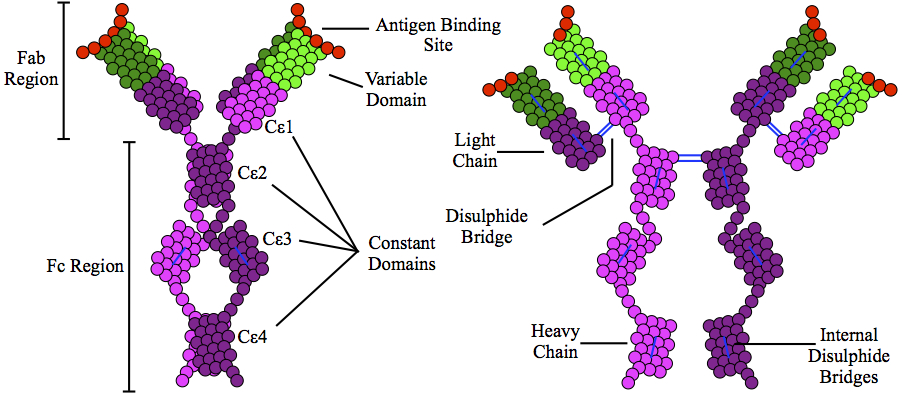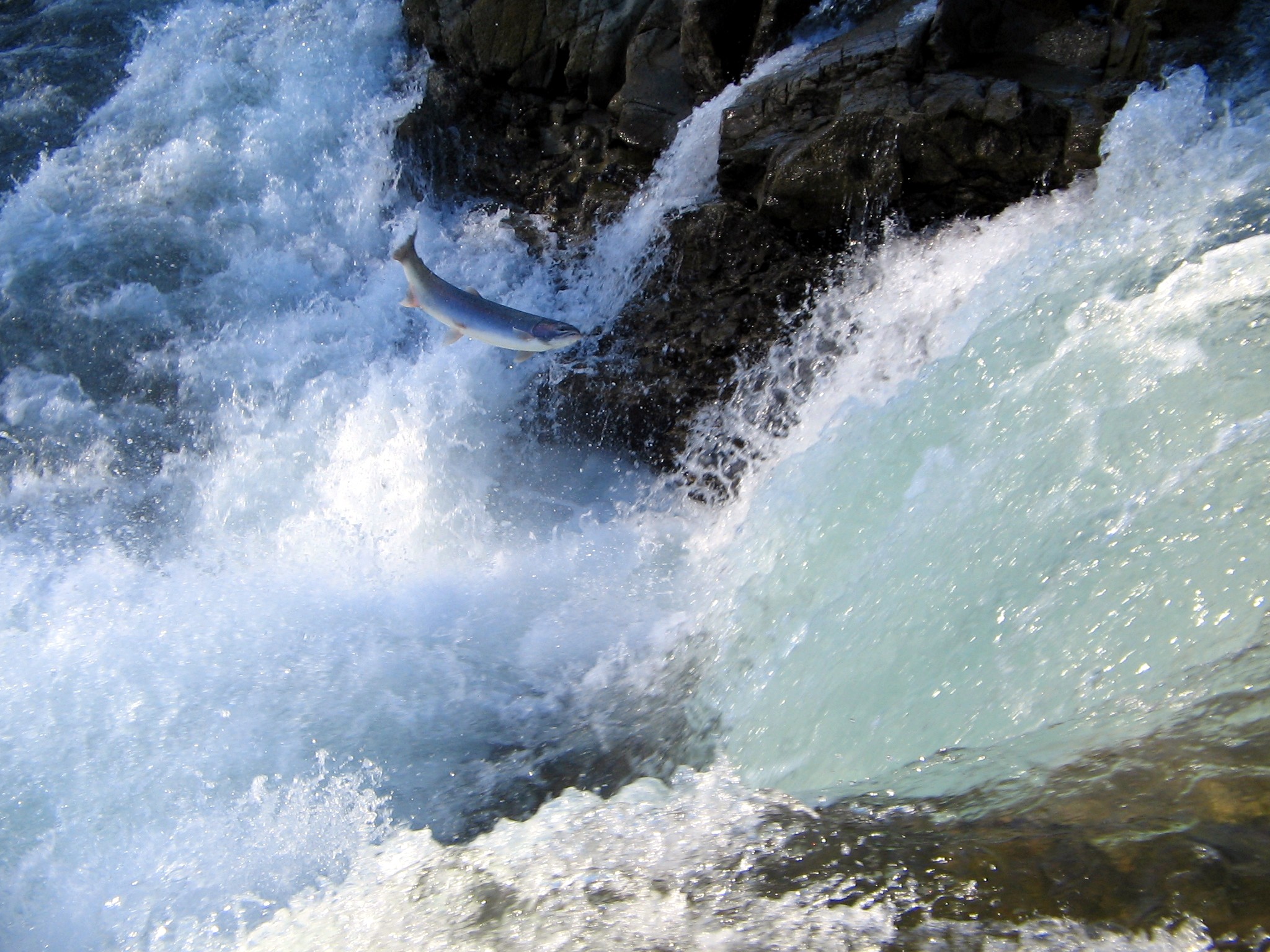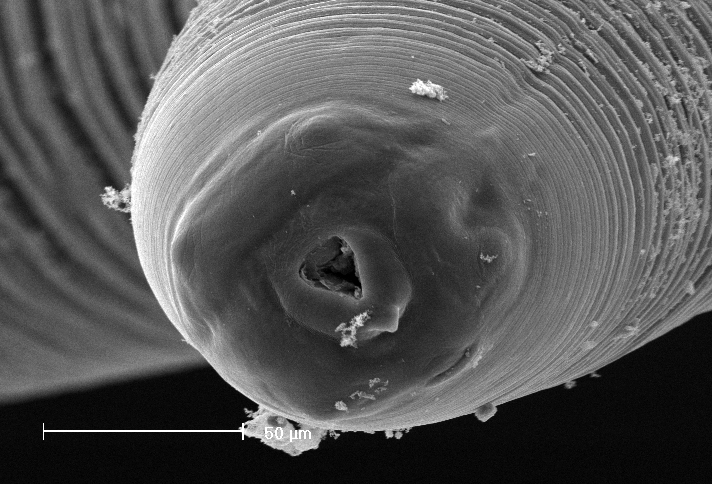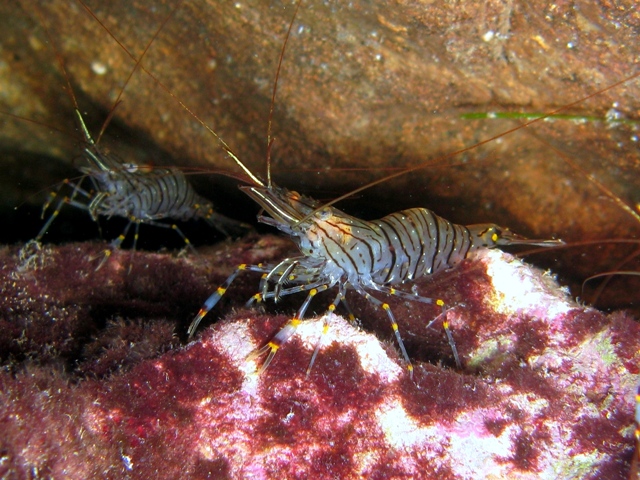|
Fish Allergy
Fish allergy is an immune hypersensitivity to proteins found in fish. Symptoms can be either rapid or gradual in onset. The latter can take hours to days to appear. The former may include anaphylaxis, a potentially life-threatening condition which requires treatment with epinephrine. Other presentations may include atopic dermatitis or inflammation of the esophagus. Fish is one of the eight common food allergens which are responsible for 90% of allergic reactions to foods: cow's milk, eggs, wheat, shellfish, peanuts, tree nuts, fish, and soy beans. Unlike early childhood allergic reactions to milk and eggs, which often lessen as the children age, fish allergy tends to first appear in school-age children and persist in adulthood. Strong predictors for adult-persistence are anaphylaxis, high fish-specific serum immunoglobulin E (IgE) and robust response to the skin prick test. It is unclear if the early introduction of fish to the diet of babies aged 4–6 months decreases the ri ... [...More Info...] [...Related Items...] OR: [Wikipedia] [Google] [Baidu] |
Immune Hypersensitivity
Hypersensitivity (also called hypersensitivity reaction or intolerance) is an abnormal physiological condition in which there is an undesirable and adverse immune response to an antigen. It is an abnormality in the immune system that causes immune diseases including allergies and autoimmunity. It is caused by many types of particles and substances from the external environment or from within the body that are recognized by the immune cells as antigens. The immune reactions are usually referred to as an over-reaction of the immune system and they are often damaging and uncomfortable. In 1963, Philip George Houthem Gell and Robin Coombs introduced a systematic classification of the different types of hypersensitivity based on the types of antigens and immune responses involved. According to this system, known as the Gell and Coombs classification or Gell-Coombs's classification, there are four types of hypersensitivity, namely: type I, which is an Immunoglobulin E (IgE) media ... [...More Info...] [...Related Items...] OR: [Wikipedia] [Google] [Baidu] |
Immunoglobulin E
Immunoglobulin E (IgE) is a type of antibody (or immunoglobulin (Ig) " isoform") that has been found only in mammals. IgE is synthesised by plasma cells. Monomers of IgE consist of two heavy chains (ε chain) and two light chains, with the ε chain containing four Ig-like constant domains (Cε1–Cε4). IgE is thought to be an important part of the immune response against infection by certain parasitic worms, including '' Schistosoma mansoni'', ''Trichinella spiralis'', and ''Fasciola hepatica''. IgE is also utilized during immune defense against certain protozoan parasites such as ''Plasmodium falciparum''. IgE may have evolved as a defense to protect against venoms. IgE also has an essential role in type I hypersensitivity, which manifests in various allergic diseases, such as allergic asthma, most types of sinusitis, allergic rhinitis, food allergies, and specific types of chronic urticaria and atopic dermatitis. IgE also plays a pivotal role in responses to allergens, such ... [...More Info...] [...Related Items...] OR: [Wikipedia] [Google] [Baidu] |
Crustaceans
Crustaceans (from Latin meaning: "those with shells" or "crusted ones") are invertebrate animals that constitute one group of Arthropod, arthropods that are traditionally a part of the subphylum Crustacea (), a large, diverse group of mainly aquatic animal, aquatic arthropods including decapoda, decapods (shrimps, prawns, crabs, lobsters and crayfish), ostracoda, seed shrimp, branchiopoda, branchiopods, argulidae, fish lice, krill, remipedes, isopods, barnacles, copepods, Mysida, opossum shrimps, amphipods and mantis shrimp. The crustacean group can be treated as a subphylum under the clade Mandibulata. It is now well accepted that the Hexapoda, hexapods (insects and entognathans) emerged deep in the Crustacean group, with the completed pan-group referred to as Pancrustacea. The three classes Cephalocarida, Branchiopoda and Remipedia are more closely related to the hexapods than they are to any of the other crustaceans (oligostracans and multicrustaceans). The 67,000 described spec ... [...More Info...] [...Related Items...] OR: [Wikipedia] [Google] [Baidu] |
Aerosol
An aerosol is a suspension (chemistry), suspension of fine solid particles or liquid Drop (liquid), droplets in air or another gas. Aerosols can be generated from natural or Human impact on the environment, human causes. The term ''aerosol'' commonly refers to the mixture of particulates in air, and not to the particulate matter alone. Examples of natural aerosols are fog, mist or dust. Examples of human caused aerosols include particulate air pollutants, mist from the discharge at hydroelectric dams, irrigation mist, perfume from Spray nozzle, atomizers, smoke, dust, Pesticide, sprayed pesticides, and medical treatments for respiratory illnesses. Several types of atmospheric aerosol have a significant effect on Earth's climate: volcanic, desert dust, sea-salt, that originating from biogenic sources and human-made. Volcanic aerosol forms in the stratosphere after an eruption as droplets of sulfuric acid that can prevail for up to two years, and reflect sunlight, lowering tempera ... [...More Info...] [...Related Items...] OR: [Wikipedia] [Google] [Baidu] |
Squid
A squid (: squid) is a mollusc with an elongated soft body, large eyes, eight cephalopod limb, arms, and two tentacles in the orders Myopsida, Oegopsida, and Bathyteuthida (though many other molluscs within the broader Neocoleoidea are also called ''squid'' despite not strictly fitting these criteria). Like all other cephalopods, squid have a distinct head, Symmetry (biology)#Bilateral symmetry, bilateral symmetry, and a mantle (mollusc), mantle. They are mainly soft-bodied, like octopuses, but have a small internal skeleton in the form of a rod-like gladius (cephalopod), gladius or pen, made of chitin. Squid diverged from other cephalopods during the Jurassic and occupy a similar Ecological niche, role to teleost fish as open-water predators of similar size and behaviour. They play an important role in the open-water food web. The two long tentacles are used to grab prey and the eight arms to hold and control it. The beak then cuts the food into suitable size chunks for swal ... [...More Info...] [...Related Items...] OR: [Wikipedia] [Google] [Baidu] |
Anadromous
Fish migration is mass relocation by fish from one area or body of water to another. Many types of fish migrate on a regular basis, on time scales ranging from daily to annually or longer, and over distances ranging from a few metres to thousands of kilometres. Such migrations are usually done for better feeding or to reproduce, but in other cases the reasons are unclear. Fish migrations involve movements of schools of fish on a scale and duration larger than those arising during normal daily activities. Some particular types of migration are ''anadromous'', in which adult fish live in the sea and migrate into fresh water to spawn; and ''catadromous'', in which adult fish live in fresh water and migrate into salt water to spawn. Marine forage fish often make large migrations between their spawning, feeding and nursery grounds. Their movements are associated with ocean currents and with the availability of food in different areas at different times of the year. The migratory ... [...More Info...] [...Related Items...] OR: [Wikipedia] [Google] [Baidu] |
Nematode
The nematodes ( or ; ; ), roundworms or eelworms constitute the phylum Nematoda. Species in the phylum inhabit a broad range of environments. Most species are free-living, feeding on microorganisms, but many are parasitic. Parasitic worms (helminths) are the cause of soil-transmitted helminthiases. They are classified along with arthropods, tardigrades and other moulting animals in the clade Ecdysozoa. Unlike the flatworms, nematodes have a tubular digestive system, with openings at both ends. Like tardigrades, they have a reduced number of Hox genes, but their sister phylum Nematomorpha has kept the ancestral protostome Hox genotype, which shows that the reduction has occurred within the nematode phylum. Nematode species can be difficult to distinguish from one another. Consequently, estimates of the number of nematode species are uncertain. A 2013 survey of animal biodiversity suggested there are over 25,000. Estimates of the total number of extant species are su ... [...More Info...] [...Related Items...] OR: [Wikipedia] [Google] [Baidu] |
Anisakis
''Anisakis'' ( ) is a genus of parasitic nematodes that have life cycles involving fish and marine mammals. They are infective to humans and cause #Anisakiasis, anisakiasis. People who produce immunoglobulin E in response to this parasite may subsequently have an allergic reaction, including anaphylactic, anaphylaxis, after eating fish infected with ''Anisakis'' species. Etymology The genus ''Anisakis'' was defined in 1845 by Félix Dujardin as a subgenus of the genus (biology), genus ''Ascaris'' Carl Linnaeus, Linnaeus, 10th edition of Systema Naturae, 1758. Dujardin did not make explicit the etymology, but stated that the subgenus included the species in which the males have unequal spicule (nematode), spicules ("''mâles ayant des spicules inégaux''"); thus, the name ''Anisakis'' is based on ''anis-'' (Greek prefix for different) and ''akis'' (Greek for spine or spicule). Two species were included in the new subgenus, ''Ascaris'' (''Anisakis'') ''distans'' Karl Asmund Rudolph ... [...More Info...] [...Related Items...] OR: [Wikipedia] [Google] [Baidu] |
Anisakis In O
''Anisakis'' ( ) is a genus of parasitic nematodes that have life cycles involving fish and marine mammals. They are infective to humans and cause anisakiasis. People who produce immunoglobulin E in response to this parasite may subsequently have an allergic reaction, including anaphylaxis, after eating fish infected with ''Anisakis'' species. Etymology The genus ''Anisakis'' was defined in 1845 by Félix Dujardin as a subgenus of the genus ''Ascaris'' Linnaeus, 1758. Dujardin did not make explicit the etymology, but stated that the subgenus included the species in which the males have unequal spicules ("''mâles ayant des spicules inégaux''"); thus, the name ''Anisakis'' is based on ''anis-'' (Greek prefix for different) and ''akis'' (Greek for spine or spicule). Two species were included in the new subgenus, ''Ascaris'' (''Anisakis'') ''distans'' Rudolphi, 1809 and ''Ascaris'' (''Anisakis'') simplex Rudolphi, 1809. Life cycle ''Anisakis'' species have complex life cycles ... [...More Info...] [...Related Items...] OR: [Wikipedia] [Google] [Baidu] |
Tropomyosin
Tropomyosin is a two-stranded alpha-helical, coiled coil protein found in many animal and fungal cells. In animals, it is an important component of the muscular system which works in conjunction with troponin to regulate muscle contraction. It is present in smooth and striated muscle tissues, which can be found in various organs and body systems, including the heart, blood vessels, respiratory system, and digestive system. In fungi, tropomyosin is found in cell walls and helps maintain the structural integrity of cells. Tropomyosin is found in other eukaryotes too, but not in plants. Overall, tropomyosin is an important protein that plays a vital role in the proper functioning of many different organisms. Tropomyosin and the actin skeleton All organisms contain organelles that provide physical integrity to their cells. These types of organelles are collectively known as the cytoskeleton, and one of the most ancient systems is based on filamentous polymers of the protein actin. ... [...More Info...] [...Related Items...] OR: [Wikipedia] [Google] [Baidu] |
Shrimp
A shrimp (: shrimp (American English, US) or shrimps (British English, UK)) is a crustacean with an elongated body and a primarily Aquatic locomotion, swimming mode of locomotion – typically Decapods belonging to the Caridea or Dendrobranchiata, although some Shrimp#Non-decapods, crustaceans outside of this order are also referred to as "shrimp". Any small crustacean may also be referred to as "shrimp", regardless of resemblance. More narrow definitions may be restricted to Caridea, to smaller species of either of the aforementioned groups, or only the Marine life, marine species. Under a broader definition, ''shrimp'' may be synonymous with prawn, covering stalk-eyed swimming crustaceans with long, narrow muscular tails (Abdomen#Arthropoda, abdomens), long whiskers (Antenna (biology), antennae), and slender, Biramous, biramous legs. They swim forward by paddling the swimmerets on the underside of their abdomens, although their escape response is typically repeated flicks wit ... [...More Info...] [...Related Items...] OR: [Wikipedia] [Google] [Baidu] |
Lobster
Lobsters are Malacostraca, malacostracans Decapoda, decapod crustaceans of the family (biology), family Nephropidae or its Synonym (taxonomy), synonym Homaridae. They have long bodies with muscular tails and live in crevices or burrows on the sea floor. Three of their five pairs of legs have claws, including the first pair, which are usually much larger than the others. Highly prized as seafood, lobsters are economically important and are often one of the most profitable commodities in the coastal areas they populate. Commercially important species include two species of ''Homarus'' from the northern Atlantic Ocean and Scampi (other), scampi (which look more like a shrimp, or a "mini lobster")—the Northern Hemisphere genus ''Nephrops'' and the Southern Hemisphere genus ''Metanephrops''. Distinction Although several other groups of crustaceans have the word "lobster" in their names, the unqualified term "lobster" generally refers to the clawed lobsters of the fam ... [...More Info...] [...Related Items...] OR: [Wikipedia] [Google] [Baidu] |










